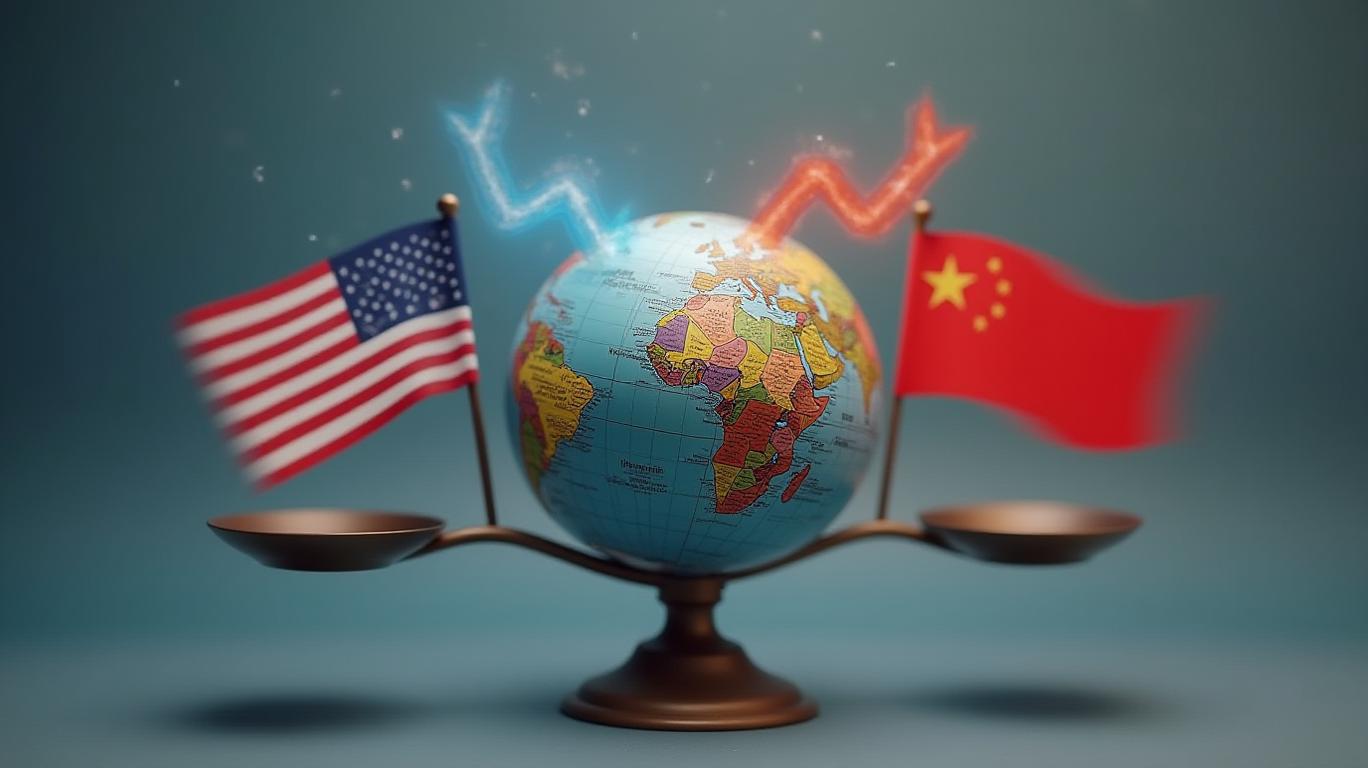A Fragile Window for U.S.-China Trade Talks: Navigating Economic Crosscurrents
The door to U.S.-China trade talks has opened no wider than a crack, but even that sliver of possibility has sent ripples through global markets. Over the past month, conflicting signals from both nations—mixed rhetoric, incremental tariff adjustments, and behind-the-scenes diplomacy—paint a picture of cautious hope amid entrenched distrust. For investors, the challenge is to discern whether this opening signals a durable thaw or merely a tactical pause in a prolonged conflict.
Ask Aime: "Will U.S.-China trade talks lead to lasting peace or just a temporary truce?"

The Fragile Crack: Signals and Stumbling Blocks
President Trump’s recent hints at a potential “new trade deal” with China have fueled brief market rallies, only to be undercut by Beijing’s categorical denial of active negotiations. While the White House emphasizes “de-escalation,” China’s commerce ministry insists the U.S. must first abandon “unilateral tariffs” to “open the door” to talks. The asymmetry is stark: U.S. tariffs on Chinese goods average 145%, while China’s retaliatory tariffs on U.S. imports hit 125%. Both sides have introduced limited exemptions—China on ethane and semiconductors, the U.S. on auto parts—to ease pain without appearing conciliatory.
Ask Aime: What's the future of the U.S.-China trade talks?
Economic Pressures Fueling Caution
The costs of the trade war are mounting. China’s factory activity slowed in April 2025, with its manufacturing PMI dipping to 49.2—below the 50 threshold for contraction—amid “sharp changes in the external environment.” U.S. firms are also reeling: PepsiCo reported a 10% drop in Q1 earnings per share, citing trade-related headwinds, while STMicroelectronics warned of a 16% YoY revenue decline in Q2, exacerbated by supply chain disruptions. These figures underscore the high stakes for multinational corporations caught in the crossfire.
Market Reactions: Hope vs. Reality
Investors have oscillated between optimism and skepticism. The S&P 500 initially rallied on rumors of a U.S.-China deal, but gains evaporated when China dismissed negotiations as “baseless.” The “Wall Street Fear Index” (VIX) spiked to 22.5—its highest in six months—reflecting this uncertainty. Meanwhile, gold prices surged to a two-year high, with investors treating the metal as a hedge against unresolved trade tensions. Even whispers of a “phase one” deal—such as a 90-day tariff pause—have proven ephemeral, as Trump’s administration wavers between conciliation and coercion.
Navigating the Crosscurrents: An Investor’s Playbook
The current environment demands a nuanced strategy:
- Sector Rotation:
- Winners: Companies with diversified supply chains, like Apple (AAPL), which sources components across Asia, or logistics giants like FedEx (FDX), which benefit from trade volume stability.
Losers: Tariff-heavy industries such as autos (e.g., General Motors (GM)) or semiconductors (e.g., NVIDIA (NVDA)), which face prolonged headwinds.
Geopolitical Plays:
- Emerging Markets: Countries like Indonesia, which are pivoting to U.S. trade ties to reduce China dependency, could see currency and equity boosts.
Commodities: Rare earth metals (e.g., lithium, neodymium) remain a battleground; miners like Lundin Mining (LUMI) may gain if China’s export restrictions tighten further.
Defensive Positions:
- Bonds: U.S. Treasuries (10Y yield: 3.4%) offer ballast against equity volatility.
- Gold Miners: Stocks like Barrick Gold (GOLD) could outperform if the VIX remains elevated.
Conclusion: A Crack, Not a Door
The “crack” in U.S.-China trade talks is real but perilously narrow. While both sides face mounting economic pain—a 1.2% GDP drag on China from trade tensions and a 0.8% hit to U.S. growth—neither wants to appear the first to blink. Investors should treat this as a tactical opportunity rather than a buy signal. Focus on companies insulated from tariffs, diversify geographically, and maintain hedges against volatility. The door may inch open further, but history suggests it could slam shut again in the blink of an eye.
Last Price($) | Last Change% | Region |
|---|---|---|
| 2.08 | 111.21% | United States |
| 0.75 | 87% | United States |
| 21.88 | 43.76% | United States |
| 1.21 | 40.37% | United States |
| 1 | 38.89% | China |
| 7.18 | 33.96% | United States |
| 1.62 | 33.88% | United States |
| 9.84 | 33.70% | United States |
| 22.58 | 33.69% | United States |
| 3.02 | 33.63% | United States |
Ticker |
|---|
| FRGTFreight Technologies |
| IBOImpact BioMedical |
| CPSCooper-standard Holdings |
| BIVIBioVie |
| STECSantech Holdings |
| KIDZClassover |
| INZYInozyme Pharma |
| ADPTAdaptive |
| AGFYAgrify |
| AIRSAirSculpt |
For now, the wisest move is to treat this fragile window as a chance to reposition—not a reason to abandon caution.

_b905d9341749265671656.jpg)








I made over 150k here with an expert’s help and recommendation 🤗
She’s great connect 🇺🇸+.𝟣𝟧𝟨𝟥𝟤𝟩𝟫𝟪𝟦𝟪𝟩